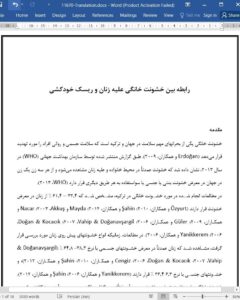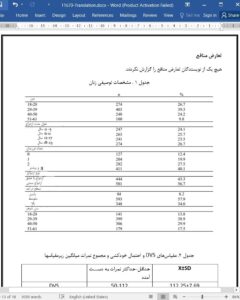Introduction
Domestic violence is one of major health crises in the world and in Turkey that threaten the physical and mental health (Erdoğan et al., 2009). According to a report published by the World Health Organization (WHO) in 2013, it is reported that the violence is mostly experienced at family environment and against women, one out of every three women in the world is exposed to physical or sexual violence or abused in another way (WHO, 2013).
In the studies conducted on domestic violence in Turkey, it has been determined that 32.4- 61.4% of women are exposed to violence (Özyurt et al., 2010; Şahin et al., 2012; Mayda & Akkuş, 2003; Nacar et al., 2009; Güler et al., 2006; Doğanavşargil & Vahip, 2007; Kocacık & Doğan, 2006; Yanikkerem et al., 2006). In the studies, when the types of violence to which women are exposed were examined, it was observed that the women were exposed mostly to physical violence with the rate of 38.3-64.8% (Doğanavşargil & Vahip, 2007; Kocacık & Doğan, 2006; Cengiz et al., 2010; Şahin et al., 2012); and sexual violence with the rate of 6.3-36.4% (Yanikkerem et al., 2006; Şahin et al., 2012). Domestic violence against women not only affects the physical health of women but also causes the psychological problems. The most important mental problems seen in women after domestic violence are post-traumatic stress disorder, anxiety disorder, and depression (Vahip & Doğanavşargil, 2006; Cengiz et al., 2010). It is seen that women generally hide this situation after the violence, withdraw into themselves, and fall into depression. Women can think of suicide as an escape to get rid of this psychological situation. For this reason, it is known that women exposed to domestic violence are in a higher risk group in terms of attempting to suicide (Özyurt & Deveci, 2010; Şahin et al., 2012; Temiz et al., 2014, WHO 2005).











